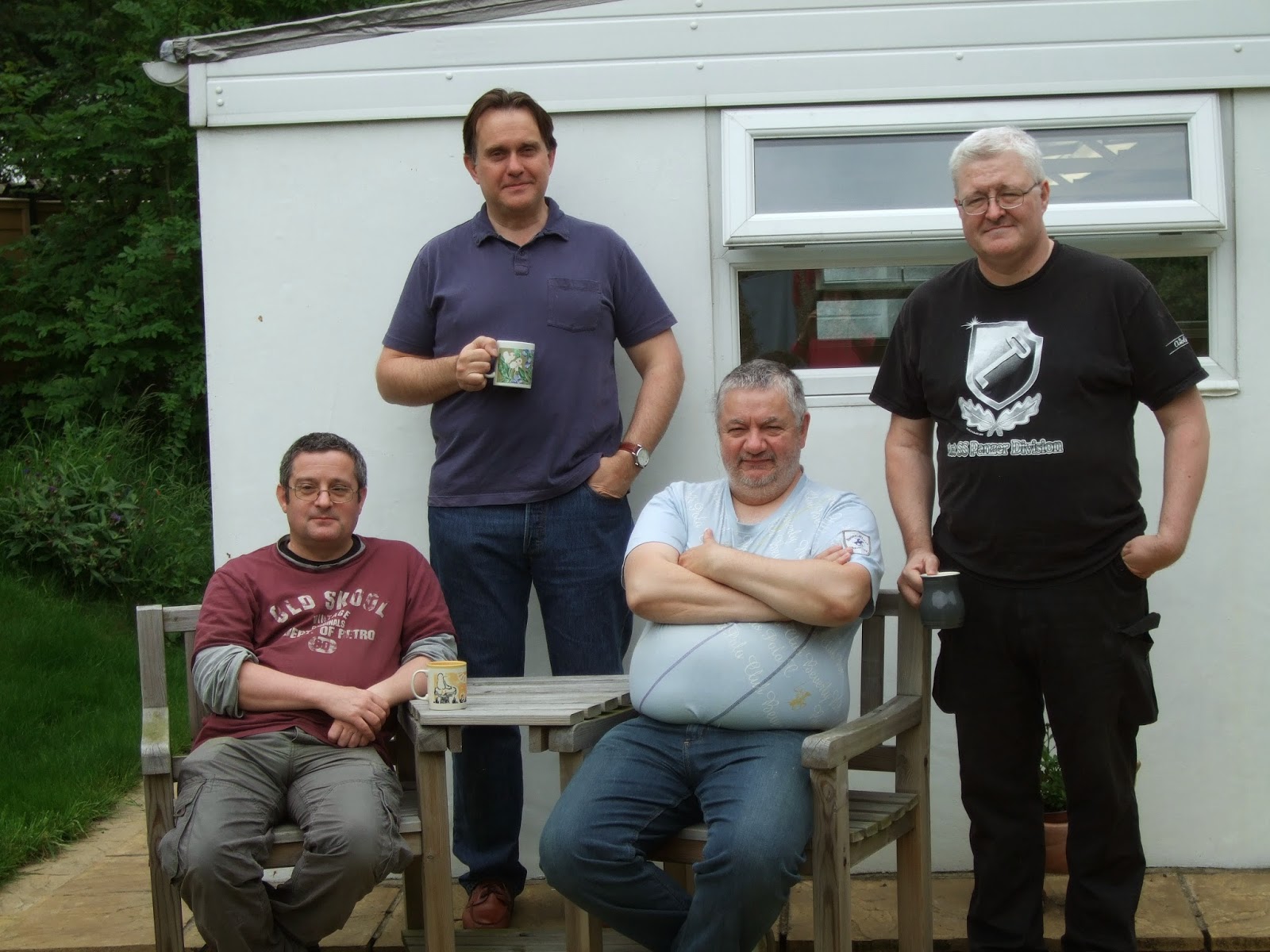This was the Battle of Mockern, to the North of Leipzig and known overall as the Battle of Nations. The game would pitch the Army of Silesia, marching via the northern roads to attack Leipzig, their paths blocked by Marmont and his forces. The allies would have advantage of numbers in all arms, most noticeably artillery and cavalry. The French have a good defensive position, the front resting on the villages that screen the north of Leipzig. The main road to Leipzig is in the background and runs next to the river Eslter. The is a road in the centre and in the foreground is a road to the right of the French line. The picky is taken to the south of the battlefield, looking west and are the rear areas of French deployment.
The picky below shows the northern part of the battlefield, including the French front line and the approaches that the allies must take
This next picky is taken from the north, looking south and is the left of the allied line. It is the village of Widderitsch and is occupied by Dombrowski's Polish troops
The village in the centre is Lindenthal and is to be occupied by one of Marmont's three divisions
Over on the allied right is the village of Mockern, occupied by another of Marmont's divisions. Marmont's third division would be held in reserve, a duty it would manage to fulfil for the entire battle.
The Prussian plan was to mask the villages with minimal amounts of infantry, advance their main infantry forces between the villages and use their superior weight of cavalry on their open left flank. The French plan was to hold the villages with infantry and the gaps in between with cavalry. A French reinforcing division, Souham, would be arriving on the French right flank with supporting cavalry and would be immediately engaged with a day long battle against superior numbers of allied cavalry trying to push in the French right flank.
An allied infantry division masses between Lindenthal and Widderitsch. Its progress would be painfully slow and they would ultimately get handle roughly by Polish light cavalry counter-attacking in the centre, contesting the ground.
Another shot of a second Allied infantry division amassing between the two same villages. The failure to undertake attacks on the key villages, to at least tie down French infantry, would allow the French too much reaction time to threats as they appeared in a more or less piecemeal fashion.
Lindenthal, the village in the centre, was never seriously threatened. The French infantry stationed there were able to react to the Allied infantry pushing forward in the centre. The Allied advance was initially checked by French infantry and then thrown back by Polish light cavalry.
Massed ranks of Russian cavalry on the Allied left. They would successive attacks throughout the day and the French would be hard pressed to hold them. Although the Allies would be ultimately held, it did stop the French was having Souham reinforce their centre, a consequence where the French were lucky that he was not required.
The piccy below shows the Polish light cavalry forcing back the two allied infantry divisions in some disorder. Cavalry rallying on the spot, facing any direction, is now a very dangerous potential situation for infantry that suddenly find themselves without cavalry support.
The last battle piccy showing the Russian cavalry attacking on their left flank. This was probably the third major attack that the Allied cavalry had made. The French would prevail, but not without suffering serious losses. The Allies also lost heavily, but they had more reserves. Fortunately for the French, nightfall would see the French still secure along the entire line and still an intact infantry division held in reserve. The Allies were not in any way broken but would use nightfall to lick their wounds
And to finish, rogues gallery. All the players were regulars, apart from John Smith (yes, it is his real name and he isn't incognito). John is likely to become a regular and is a whizz with cameras, He has already started showing me how to get the best out of my camera. The results this time are shots that are better lit and in forthcoming publications it will be the editing and sizing of high resolution piccies that will be exploited.
The next game is Borodino, complete with the Great Redoubt, Fleches and armies that are quite large (no exaggeration!!). Hurrah!!!!




























































